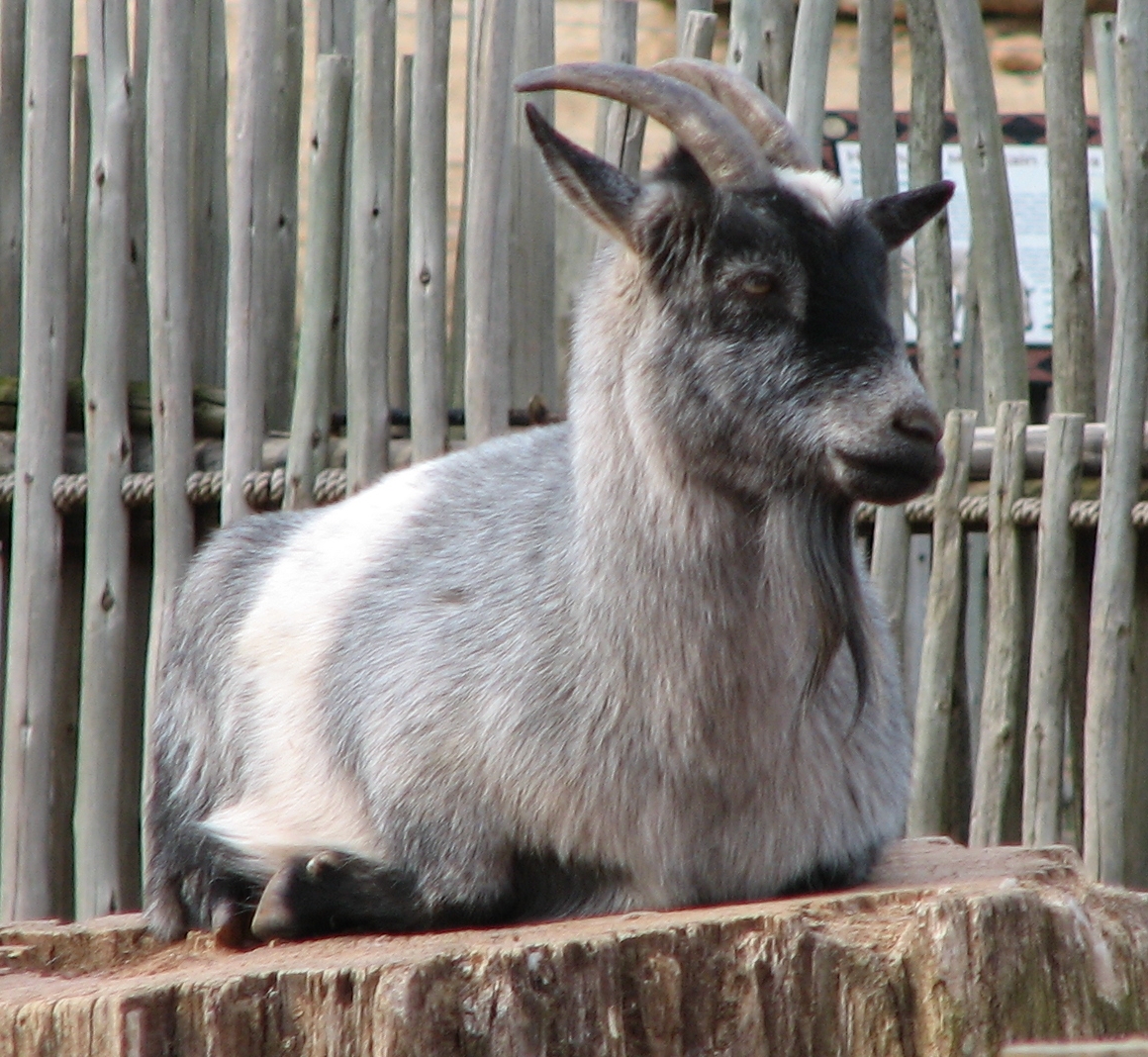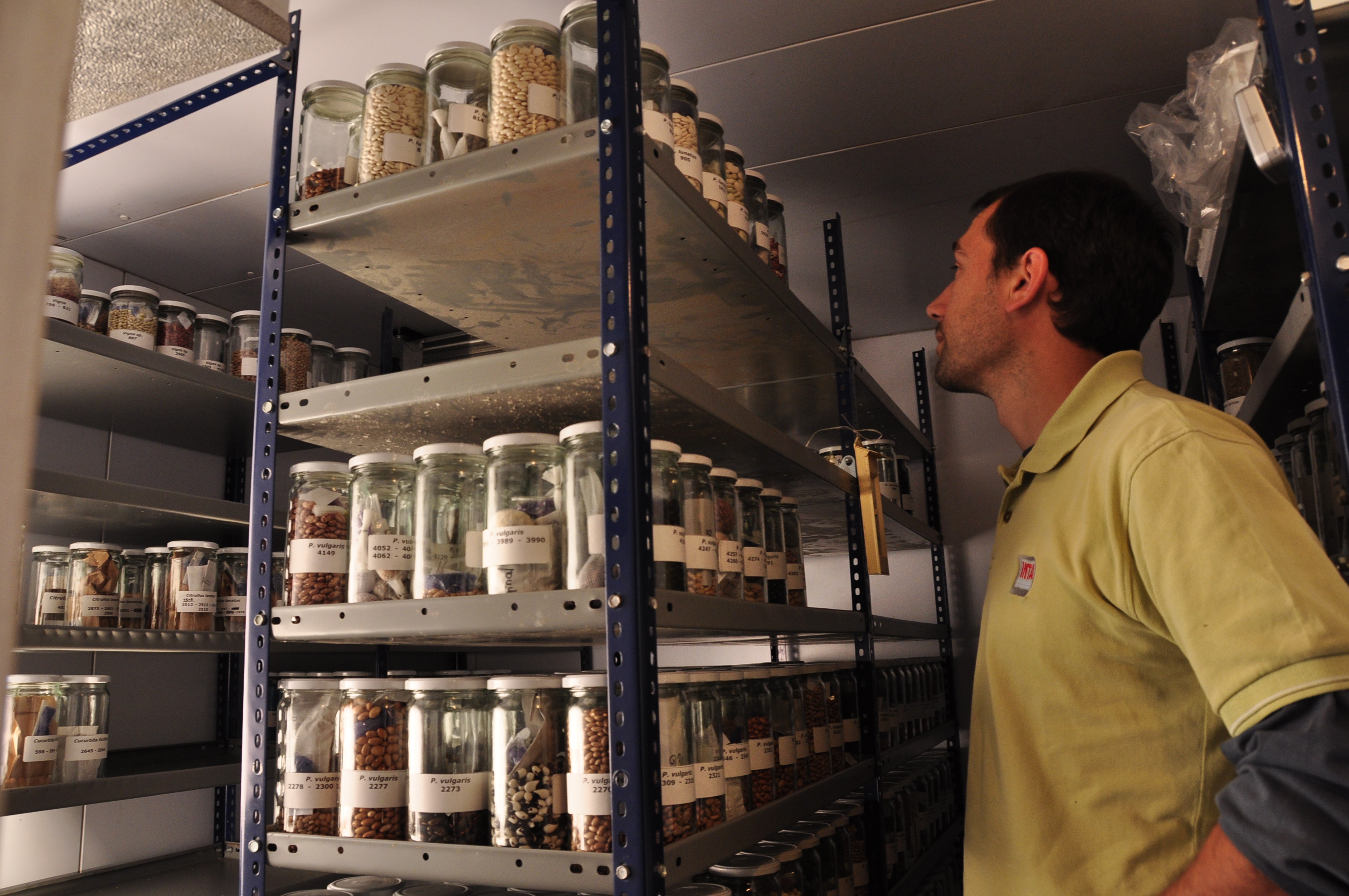|
The Livestock Conservancy
The Livestock Conservancy, formerly known as the American Livestock Breeds Conservancy (ALBC) and prior to that, the American Minor Breeds Conservancy, is a nonprofit organization focused on preserving and promoting rare breeds, also known as "heritage breeds" of livestock. Founded in 1977, through the efforts of livestock breed enthusiasts concerned about the disappearance of many of the US's heritage livestock breeds, the Conservancy was the pioneer livestock preservation organization in the United States, and remains a leading organization in that field. It has initiated programs that have saved multiple breeds from extinction, and works closely with similar organizations in other countries, including Rare Breeds Canada. With 3,000 members, a staff of nine and a 19-member board of directors, the organization has an operating budget of almost half a million dollars. The Livestock Conservancy maintains a conservation priority list that divides endangered breeds of horses, asses, ... [...More Info...] [...Related Items...] OR: [Wikipedia] [Google] [Baidu] |
Rare Breed (agriculture)
In modern agriculture, a rare breed is a breed of poultry or livestock that has a very small breeding population, usually from a few hundred to a few thousand. Because of their small numbers, rare breeds may have a threatened conservation status, and they may be protected under regional laws. Many countries have organizations devoted to the protection and promotion of rare breeds, for which they each have their own definition. In botany and horticulture, the parallel to rare animal breeds are heirloom plants, which are rare cultivars. Definitions There are several definitions of "breed" and "rare breed". Breeds may be defined as a group of animals that share visible characteristics, such as Pinto horses, which are all spotted. A stricter definition insists that breeds are "consistent and predictable genetic entities", which means that individuals from that breed will produce offspring that is predictably similar to their genitors, and that this similarity is genetically based. T ... [...More Info...] [...Related Items...] OR: [Wikipedia] [Google] [Baidu] |
SVF Foundation
The SVF Foundation is a 501(c)(3) nonprofit organization that seeks to preserve rare breeds of livestock. It is the only private organization in the United States that preserves rare livestock by gathering and storing both semen and embryos of the animals in its collection, a technique called cryopreservation. History and facilities SVF, which stands for "Swiss Village Farm", is located in Newport, Rhode Island, and has facilities both for housing live herds and for cryopreservation on its 45 acres. Live animals are also available for sale to farmers and ranchers to increase the practical use of rare breeds in modern agriculture. It is not open to the public except for one day a year, as a strict biosecurity measure. SVF was founded by Dorrance Hill Hamilton, the billionaire heir to the Campbell Soup Company fortune and one of the wealthiest Americans according to ''Forbes''. The Newport property on which it is housed was built by railroad magnate Arthur Curtiss James in the ear ... [...More Info...] [...Related Items...] OR: [Wikipedia] [Google] [Baidu] |
National Animal Germplasm Program
The National Animal Germplasm Program, or NAGP, is a program of the United States Department of Agriculture that captures and cryogenically preserves germplasm from plants and animals it considers important to agriculture for the purpose of preserving biodiversity and to provide economic benefits to the agriculture industry. Germplasm consists of semen, embryos, and other tissues that contain genetic information. The online Germplasm Resources Information Network contains information from the NAGP, along with related projects such as the USDA's National Plant Germplasm System The U.S. National Plant Germplasm System (NPGS) is a network of institutions and agencies (federal, state and private) led by the Agricultural Research Service (ARS) of the U.S. Department of Agriculture in the effort to conserve and facilitate t .... References United States Department of Agriculture {{Agri-stub ... [...More Info...] [...Related Items...] OR: [Wikipedia] [Google] [Baidu] |
White Park
White Park may refer to: ;Places: * White Park Bay, in County Antrim, Northern Ireland, UK * White Park, County Antrim, a townland in Northern Ireland, UK * White Park (Concord, New Hampshire), a public park in Concord, New Hampshire, US * White Park, a public park in Morgantown, West Virginia Morgantown is a city in and the county seat of Monongalia County, West Virginia, Monongalia County, West Virginia, United States, situated along the Monongahela River. The largest city in North-Central West Virginia, Morgantown is best known as th ..., US ;Cattle: * White Park cattle, also known as Ancient White Park, White Forest, White Horned, Wild White, and "the Park" * American White Park, a different breed of cattle * British White cattle, another breed, sometimes called "British White Park" {{dab ... [...More Info...] [...Related Items...] OR: [Wikipedia] [Google] [Baidu] |
Agricultural Subsidy
An agricultural subsidy (also called an agricultural incentive) is a government incentive paid to agribusinesses, agricultural organizations and farms to supplement their income, manage the supply of agricultural commodities, and influence the cost and supply of such commodities. Examples of such commodities include: wheat, feed grains (grain used as fodder, such as maize or corn, sorghum, barley and oats), cotton, milk, rice, peanuts, sugar, tobacco, oilseeds such as soybeans and meat products such as beef, pork, and lamb and mutton. A 2021 study by the UN Food and Agriculture Organization found $540 Billion was given to farmers every year between 2013 and 2018 in global subsidies. The study found these subsidies are harmful in numerous ways. In wealthy countries, they damage health by promoting the overconsumption of meat. In under-developed countries they encourage overconsumption of low-nutrition staples. Subsidies also contribute to the climate crisis, by encouraging d ... [...More Info...] [...Related Items...] OR: [Wikipedia] [Google] [Baidu] |
Germplasm
Germplasm are living genetic resources such as seeds or tissues that are maintained for the purpose of animal and plant breeding, preservation, and other research uses. These resources may take the form of seed collections stored in seed banks, trees growing in nurseries, animal breeding lines maintained in animal breeding programs or gene banks, etc. Germplasm collections can range from collections of wild species to elite, domesticated breeding lines that have undergone extensive human selection. Germplasm collection is important for the maintenance of biological diversity and food security. See also * Animal genetic resources for food and agriculture *Conservation biology *Cryoconservation of animal genetic resources *Forest genetic resources *International Treaty on Plant Genetic Resources for Food and Agriculture * Plant genetic resources *Seed saving References *Day-Rubenstein, K and Heisey, P. 2003. Plant Genetic Resources: New Rules for International Exchange' * 63 p. * ... [...More Info...] [...Related Items...] OR: [Wikipedia] [Google] [Baidu] |
Gene Mapping
Gene mapping describes the methods used to identify the locus of a gene and the distances between genes. Gene mapping can also describe the distances between different sites within a gene. The essence of all genome mapping is to place a collection of molecular markers onto their respective positions on the genome. Molecular markers come in all forms. Genes can be viewed as one special type of genetic markers in the construction of genome maps, and mapped the same way as any other markers. In some areas of study, gene mapping contributes to the creation of new recombinants within an organism. Genetic vs physical There are two distinctive types of "maps" used in the field of genome mapping: genetic maps and physical maps. While both maps are a collection of genetic markers and gene loci, genetic maps' distances are based on the genetic linkage information, while physical maps use actual physical distances usually measured in number of base pairs. While the physical map cou ... [...More Info...] [...Related Items...] OR: [Wikipedia] [Google] [Baidu] |
Living-history Museum
An open-air museum (or open air museum) is a museum that exhibits collections of buildings and artifacts out-of-doors. It is also frequently known as a museum of buildings or a folk museum. Definition Open air is “the unconfined atmosphere…outside buildings...” In the loosest sense, an open-air museum is any institution that includes one or more buildings in its collections, including farm museums, historic house museums, and archaeological open-air museums. Mostly, 'open-air museum is applied to a museum that specializes in the collection and re-erection of multiple old buildings at large outdoor sites, usually in settings of recreated landscapes of the past, and often include living history. They may, therefore, be described as building museums. European open-air museums tended to be sited originally in regions where wooden architecture prevailed, as wooden structures may be translocated without substantial loss of authenticity. Common to all open-air museums, including ... [...More Info...] [...Related Items...] OR: [Wikipedia] [Google] [Baidu] |
Colonial Williamsburg
Colonial Williamsburg is a living-history museum and private foundation presenting a part of the historic district in the city of Williamsburg, Virginia, United States. The Colonial Williamsburg Foundation has 7300 employees at this location and . (Employees figure is .) There are 37 companies in The Colonial Williamsburg Foundation corporate family. Its historic area includes several hundred restored or re-created buildings from the 18th century, when the city was the capital of Colonial Virginia; 17th-century, 19th-century, and Colonial Revival structures; and more recent reconstructions. An interpretation of a colonial American city, the historic area includes three main thoroughfares and their connecting side streets that attempt to suggest the atmosphere and the circumstances of 18th-century Americans. Costumed employees work and dress as people did in the era, sometimes using colonial grammar and diction (although not colonial accents). In the late 1920s, the restoration a ... [...More Info...] [...Related Items...] OR: [Wikipedia] [Google] [Baidu] |
Children's Museum
Children's museums are institutions that provide exhibits and programs to stimulate informal learning experiences for children. In contrast with traditional museums that typically have a hands-off policy regarding exhibits, children's museums feature interactive exhibits that are designed to be manipulated by children. The theory behind such exhibits is that activity can be as educational as instruction, especially in early childhood. Most children's museums are nonprofit organizations, and many are run by volunteers or by very small professional staffs. International professional organizations of children's museums include the Association of Children's Museums (ACM), which was formed in 1962 as the American Association of Youth Museums (AAYM) and in 2007 counted 341 member institutions in 23 countries, and The Hands On! Europe Association of Children's Museum (HO!E), established in 1994, with member institutions in 34 countries as of 2007. Many museums that are members of ACM off ... [...More Info...] [...Related Items...] OR: [Wikipedia] [Google] [Baidu] |
Petting Zoo
A petting zoo (also called a children's zoo, children's farm, or petting farm) features a combination of domesticated animals and some wild species that are docile enough to touch and feed. In addition to independent petting zoos, many general zoos contain a petting zoo. Most petting zoos are designed to provide only relatively placid, herbivorous domesticated animals, such as sheep, goats, pigs, rabbits or ponies, to feed and interact physically with safety. This is in contrast to the usual zoo experience, where normally wild animals are viewed from behind safe enclosures where no contact is possible. A few provide wild species (such as pythons or big cat cubs) to interact with, but these are rare and usually found outside Western nations. History In 1938, the London Zoo included the first ''children's zoo'' in Europe and the Philadelphia Zoo was the first in North America to open a special zoo just for children. During the 1990s, Dutch cities began building petting zoos in ... [...More Info...] [...Related Items...] OR: [Wikipedia] [Google] [Baidu] |





